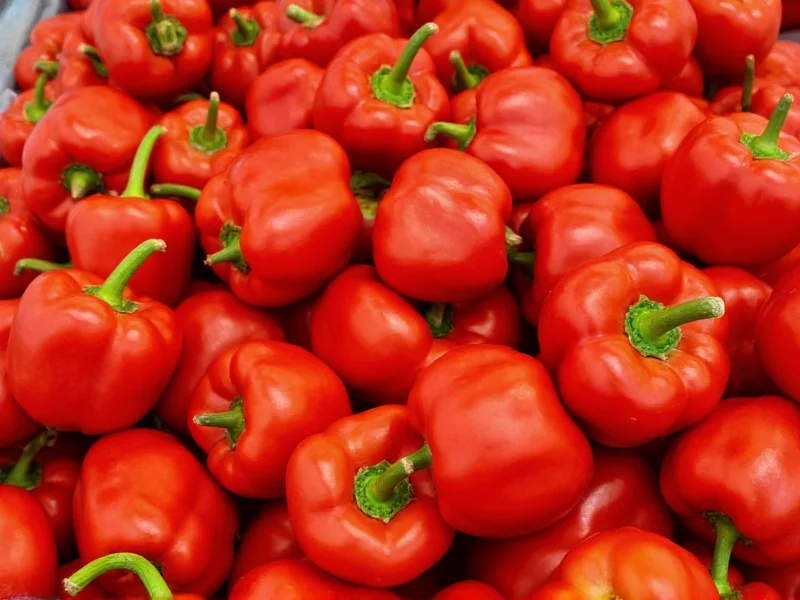Understanding paprika's composition matters for both culinary precision and dietary awareness. This vibrant red spice enhances dishes worldwide, but its ingredients differ significantly based on origin and type. Whether you're checking for allergens, seeking authentic flavors, or simply curious about your spice rack staples, knowing exactly what goes into paprika helps you make informed cooking decisions.
The Core Ingredients Behind Paprika
Paprika's foundation is always dried peppers, but the specific varieties determine its flavor profile, color intensity, and heat level. The Capsicum annuum species provides most paprika peppers, though regional preferences create distinct variations:
- Sweet paprika typically uses large, thick-walled sweet peppers with minimal capsaicin
- Hot paprika incorporates spicier varieties containing capsaicinoids
- Smoked paprika (pimentón) uses peppers dried over oak fires
Unlike some commercial spice blends, authentic paprika contains only peppers—no salt, starches, or anti-caking agents. The European Union's Protected Designation of Origin (PDO) regulations for Hungarian paprika strictly prohibit additives, ensuring pure pepper composition.
Regional Variations in Paprika Composition
Geographic origin dramatically influences paprika's makeup. Different regions cultivate specific pepper varieties and employ unique processing methods that define their signature paprika:
| Region | Primary Pepper Varieties | Distinctive Characteristics |
|---|---|---|
| Hungary | Kőrös, Szeged, Csipke | Sweet to moderately hot, deep red color, complex flavor |
| Spain | Ónati, Jaranda, Jeromín | Smoked varieties (pimentón), ranging from sweet to hot |
| California | Sweet Bell Peppers | Milder flavor, brighter red color, less complex |
| South America | Aji varieties | Often hotter, fruitier notes, varying color intensity |
The Paprika Production Process
Transforming peppers into paprika involves careful harvesting and processing that preserves flavor compounds and color pigments:
- Harvesting - Peppers are picked at peak ripeness when color compounds (capsanthin) are most concentrated
- Drying - Traditional methods use sun-drying or smoke-drying; modern production uses controlled dehydration
- Stemming and seeding - Seeds and stems are removed as they contain bitter compounds
- Grinding - Dried peppers are milled to specific particle sizes (fine for cooking, coarser for garnish)
- Testing - Quality paprika undergoes color intensity (ASTA units) and flavor profile analysis
The drying method significantly impacts composition. Spanish smoked paprika (pimentón) develops unique flavor compounds from the oak smoke, while Hungarian paprika's vibrant red color comes from careful sun-drying that preserves carotenoids.
Identifying Pure Paprika vs. Blends
While authentic paprika contains only peppers, some commercial products add ingredients that alter composition:
- Pure paprika lists only “ground peppers” or “paprika” in ingredients
- Blended paprika may include salt, silicon dioxide (anti-caking agent), or other spices
- Seasoning mixes often mislabeled as paprika contain additional ingredients like garlic powder
Check packaging for certifications like PDO (Protected Designation of Origin) which guarantees authentic composition. Hungarian «Név» paprika must contain 100% Hungarian-grown peppers with no additives to earn this designation.
How Paprika Composition Affects Culinary Use
The specific makeup of your paprika determines its best applications in cooking. Sweet Hungarian paprika's balanced flavor works well in goulash and stews, while Spanish smoked paprika adds depth to chorizo and roasted vegetables. Hot paprika varieties containing cayenne peppers provide both color and heat for spicy dishes.
Storage also relates to composition—paprika's natural oils can degrade when exposed to light and air. Pure paprika without anti-caking agents may clump but maintains better flavor integrity. For optimal freshness, store paprika in an airtight container away from heat sources, using within 6-12 months for peak flavor.
Common Misconceptions About Paprika Ingredients
Several myths persist about paprika's composition. Some believe paprika contains tomato powder (it doesn't—the red color comes from pepper carotenoids). Others think all paprika is spicy (sweet varieties contain negligible capsaicin). Understanding that paprika is simply ground peppers—without mysterious additives—helps cooks select the right type for their recipes.
Frequently Asked Questions
Is paprika made from tomatoes or peppers?
Paprika is made exclusively from peppers, specifically Capsicum annuum varieties. Despite its vibrant red color, it contains no tomato products. The red pigment comes from natural carotenoids in the peppers themselves.
Does paprika contain any additives or fillers?
Authentic, high-quality paprika contains only ground dried peppers with no additives. Some commercial blends may include anti-caking agents like silicon dioxide or salt, but pure paprika should list only 'paprika' or 'ground peppers' in the ingredients.
What's the difference between sweet and hot paprika ingredients?
Sweet paprika uses thick-walled sweet pepper varieties with minimal capsaicin, while hot paprika incorporates spicier pepper varieties containing capsaicinoids. Both are made from ground dried peppers, but the specific pepper varieties determine the heat level.
How can I tell if my paprika is pure or blended?
Check the ingredient list—pure paprika should only list 'paprika' or 'ground peppers.' If you see additional ingredients like salt, silicon dioxide, or other spices, it's a blend. Authentic Hungarian paprika with PDO certification guarantees 100% pure pepper composition.
Why does Spanish paprika taste smoky while Hungarian doesn't?
Spanish smoked paprika (pimentón) is made from peppers dried over oak fires, which imparts distinctive smoky compounds. Hungarian paprika uses sun-drying or air-drying methods that preserve the peppers' natural flavor without smoke infusion, resulting in a cleaner pepper taste.











 浙公网安备
33010002000092号
浙公网安备
33010002000092号 浙B2-20120091-4
浙B2-20120091-4